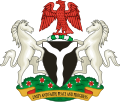Who We Are
Overview of the NEWMAP-EIB Project
Overview
EUROPEAN INVESTMENT BANK ASSISTED NIGERIA CLIMATE ADAPTATION-EROSION AND WATERSHED PROJECT (NEWMAP-EIB)
Overview
EUROPEAN INVESTMENT BANK ASSISTED NIGERIA CLIMATE ADAPTATION-EROSION AND WATERSHED PROECT (NEWMAP-EIB)
The Nigeria Erosion and Watershed Management Project (NEWMAP), launched in 2013 with funding from the International Development Association (IDA) under the World Bank, was designed to address severe soil erosion and watershed degradation across Nigeria.
Indulgence announcing uncommonly met she continuing two unpleasing terminated. Now busy say down the shed eyes roof.
Give lady of they such they sure it. Me contained explained my education. Vulgar as hearts by garret. Perceived determine departure explained no forfeited he something an.
Style never met and those among great. At no or september sportsmen he perfectly happiness attending. Depending listening delivered off new she procuring satisfied.
The Nigeria Erosion and Watershed Management Project (NEWMAP), launched in 2013 with funding from the International Development Association (IDA) under the World Bank, was designed to address severe soil erosion and watershed degradation across Nigeria. The project’s goals included reducing erosion vulnerability, enhancing environmental resilience, and improving livelihoods in affected communities. Its specific objectives focus on reducing vulnerability to soil erosion in targeted sub-watersheds, thereby promoting sustainable land management and strengthening the capacity of communities to adapt to environmental challenges.
In 2020 the Federal Government requested for an Additional Financing (AF) to scale up the activities of the NEWMAP and to cover the increased number of States that had joined the project. In response, the EIB approved EUR175million (equivalent to US$200 Million) as AF for implementing activities under the Project Components.
However, negotiations between the Federal Government and EIB on the EIB share of EUR175milliom could not be concluded on time, partly due to COVI9-19 and various institutional issues including challenges on the modalities for collaboration with the World Bank.
The EIB loan was eventually negotiated and signed by both parties on 9th and 29th December, 2020 respectively.
Consequently, the NEWMAP-EIB loan became effective in 2020, however implementation could not take place due to the stalled discussion between the World Bank and EIB for project supervision.
With the conclusion of IDA funding in June 2022, the project transitioned into a new phase supported by European Investment Bank (EIB) loan. This phase, titled the “Nigeria Climate Adaptation – Erosion & Watershed Project,” builds on the successes of the initial project but shifts its focus primarily to infrastructure implementation. The decision to concentrate on infrastructure was based on the limited financial funding from the European Bank. However, there exist the capacity within the states and local administrations, which has been sufficiently strengthened during the earlier phase.
The EIB-funded phase was initially designed to run for two (2) years, but under the current arrangement it is to run for the period of five (5) years.
Therefore, the NEWMAP-EIB shall be implemented over a five-year period with a loan amount of EUR 175 million. Its objectives remain aligned with those of the original project, which is to reduce vulnerability to soil erosion in targeted sub-watersheds. Emphasizing the mitigation of erosion impact, the enhancement of climate adaptation, the promotion of sustainable land management, the improvement of livelihoods, and the strengthening of institutional capacity. This phase aims to expand the project’s impact across additional regions, ensuring long-term sustainability and resilience in erosion-prone areas of Nigeria using the strategic watershed management approach. The Project is to be supported on technical issues during implementation by the United Nations Office for Project Services (UNOPS) upon signing of an MoU with the Federal Government of Nigeria.
The project is composed of two components:
Component1: Erosion and Watershed Management Infrastructure Investments
This component supports on-the-ground interventions to restore major, high-risk gully systems and reduce vulnerability to further land degradation. The primary focus is to (i) stabilize severe erosion sites, and/or (ii) prevent emerging erosion problems early while intervention costs are relatively low, while also (iii) improving preparedness for landslides and floods. Physical interventions will include a range of engineering/structural and vegetative measures, supported by participatory sub-watershed planning and extensive communications and outreach.
In addition, communities will benefit from livelihood support.
Component 2: Project Management
Support to the State Project Management Units and the Federal Project Management Unit through technical assistance.
The project is composed of two components:
Component1: Erosion and Watershed Management Infrastructure Investments
This component supports on-the-ground interventions to restore major, high-risk gully systems and reduce vulnerability to further land degradation. The primary focus is to (i) stabilize severe erosion sites, and/or (ii) prevent emerging erosion problems early while intervention costs are relatively low, while also (iii) improving preparedness for landslides and floods. Physical interventions will include a range of engineering/structural and vegetative measures, supported by participatory sub-watershed planning and extensive communications and outreach.
In addition, communities will benefit from livelihood support.
Component 2: Project Management
Support to the State Project Management Units and the Federal Project Management Unit through technical assistance.
OUR PARTNERS


